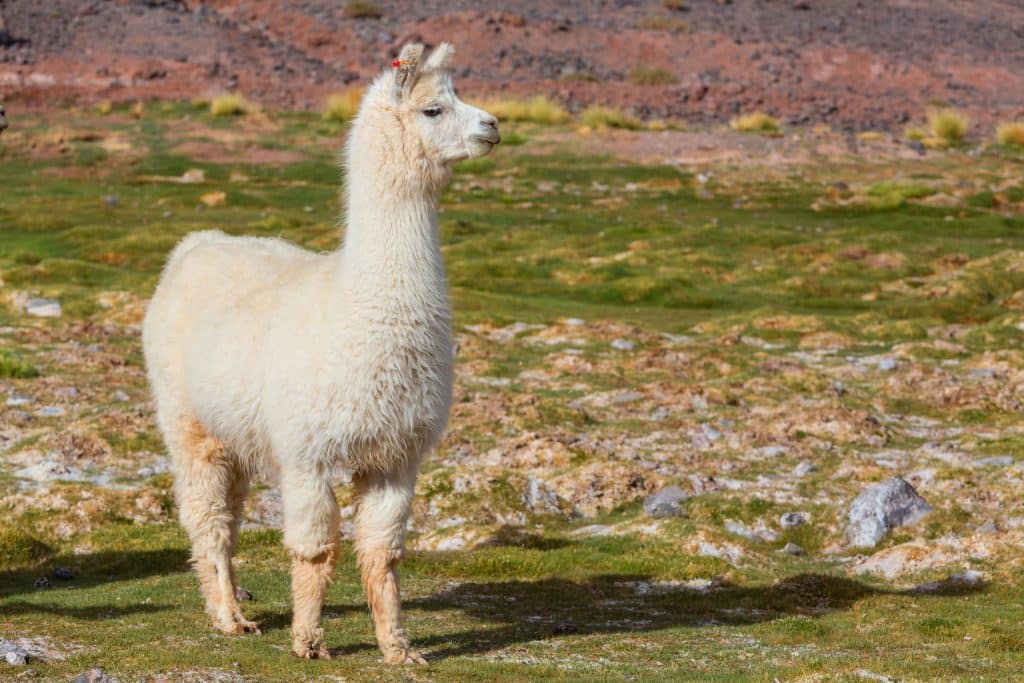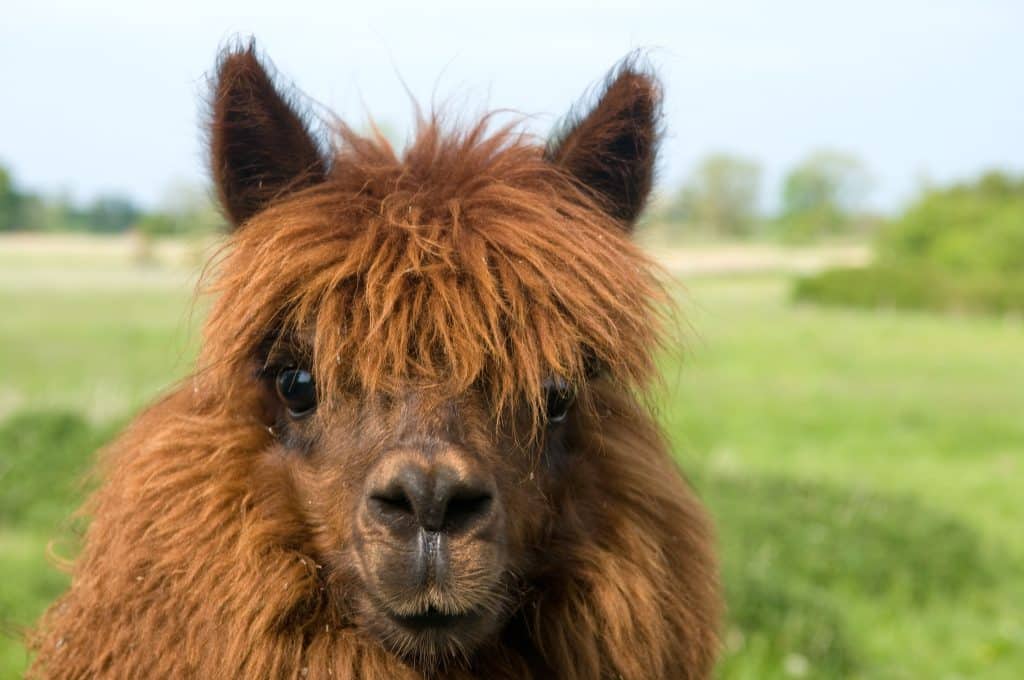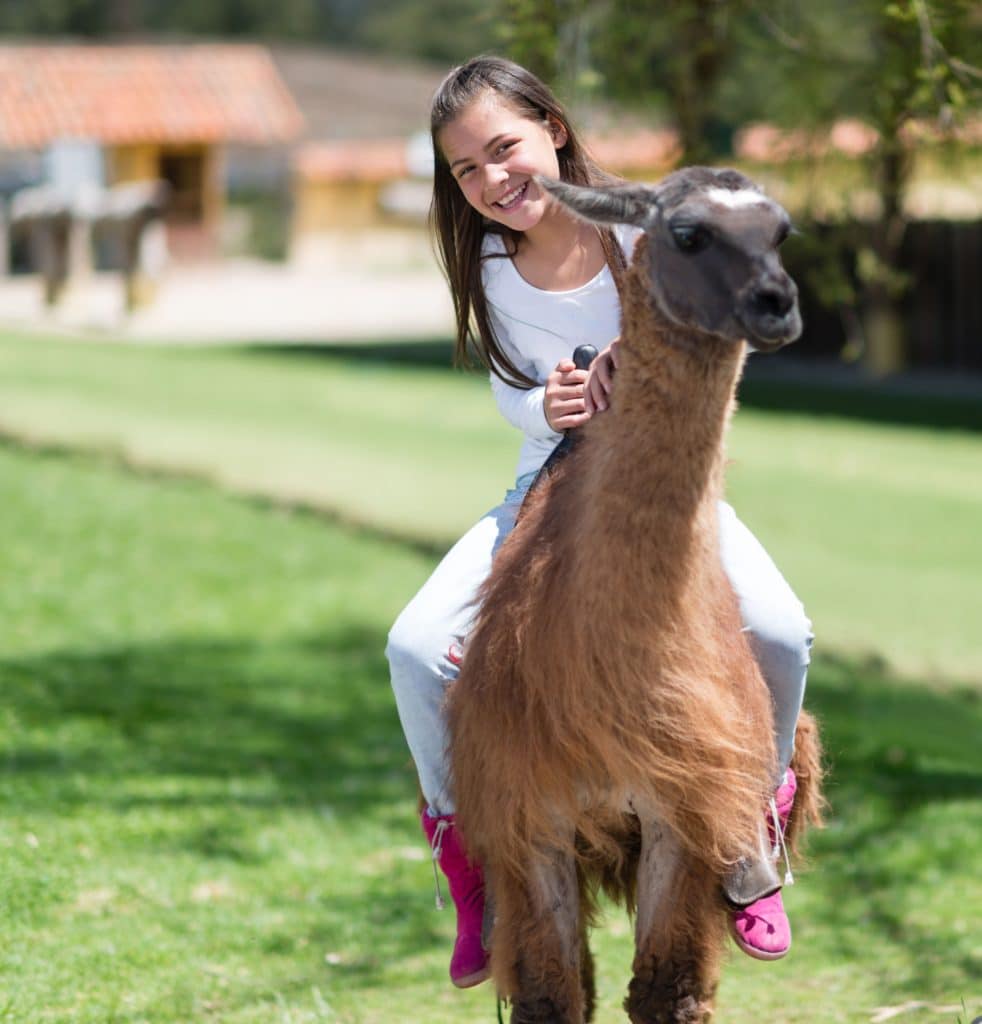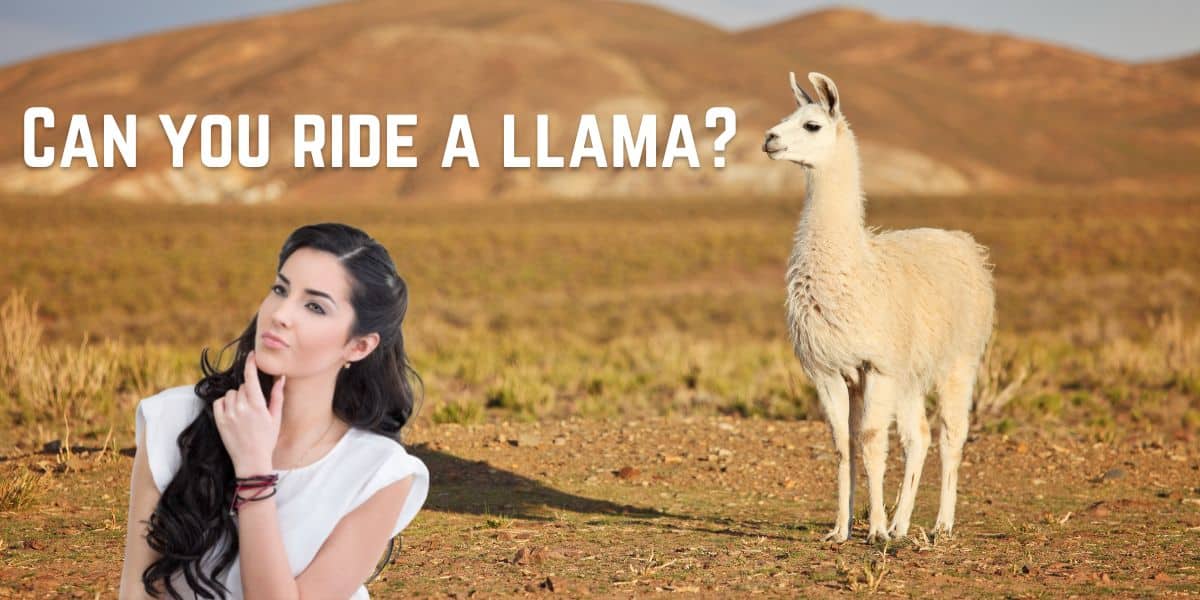Are you looking for an adventure a little out of the ordinary? Have you ever thought about trying something new, like riding a llama? If so, then this blog post is for you! In this post, we’ll explore the basics of riding a llama, from selecting the right one to learning how to make your ride comfortable. So saddle up, and let’s get started!
Can you ride a llama?
Can you ride a llama? – Yes. It is possible to ride a llama, but it is not recommended. Llamas are not designed to carry the weight of a human rider, and attempting to do so can result in serious injury. Minor children under 50 pounds may be able to safely ride a llama, although not many llamas are trained for this purpose. In addition, some traders have tamed llamas that can be ridden after they are calmed down. It is important to remember that riding a llama puts the animal at risk for severe injuries and should only be done with caution.
- Can you ride a llama?
- What are llamas?
- Are Llamas Easy to Ride?
- Types of Llama Riding Equipment
- Training a Llama to Ride
- Benefits of Riding Llamas
- Things to Consider Before Taking a Llama for a Ride
- Safety Precautions for Riding Llamas
- Tack and Grooming Tips for Llamas
- Feeding and Water Requirements for Ridden Llamas
- Common Health Issues in Ridden Llamas
- Finding the Right Place to Ride Your Llama
- Packing Techniques with a Ridden Llama
- How Long Can You Ride a Llama?
- Conclusion
What are llamas?
Llamas are a South American relative of the camel, and they have been domesticated for centuries. They are used as pack animals, guard animals, and even pets. Llamas grow to be about 5-6 feet tall and weigh between 250-400 pounds.
They typically live for 15-25 years. Llamas have long necks and long legs that can help them cross rough terrain without difficulty. Their thick fur helps them keep warm in cold climates, while their padded feet allow them to walk comfortably on rocky or uneven ground.
Llamas can be easily trained to pull carts or carry packs, making them an invaluable asset in many areas of the world. Additionally, llamas are gentle and friendly creatures who enjoy interacting with people!

Are Llamas Easy to Ride?
Are Llamas Easy to Ride? – Generally, llamas are not easy to ride. Llamas are not suited for riding, and attempts to do so could result in serious injury to the animal and the rider. Llamas can carry weight, but they are not built to support an adult human rider.
Types of Llama Riding Equipment
Llamas are becoming increasingly popular as domestic animals and pack animals. If you’re interested in riding a llama, you must be equipped with the right gear.
The first thing you need is a saddle designed explicitly for llamas. This saddle should be lightweight and comfortable for the animal so it can carry the rider’s weight without discomfort. Llamas can’t handle the same weight that horses do, so it’s essential to get a saddle that fits properly and won’t put too much strain on them.
In addition to saddles, you should also have a blanket or pad for your llama to lay on, as well as a halter and lead rope for controlling them while riding. It’s also essential to have two panniers – one on each side – allowing you to transport your supplies while riding. Lastly, make sure to have a stakeout lead which will keep your llama from wandering off while tethered outside.
With all this equipment in place, you should be ready for an enjoyable ride with your llama!
Training a Llama to Ride
Training a llama to ride can be an exciting and rewarding experience. While some llamas are bred specifically for riding, most must be prepared to accept it. The first step is to ensure that you have an assistant who can help you with the process. Once that is taken care of, there are a few key steps involved in training a llama:
1. Gently introduce your llama to the concept of being ridden. Start by having your assistant walk beside the llama while you lead them around with the reins. Build up gradually by having your assistant sit on their back before you finally take control from atop.
2. Use treats or rewards as positive reinforcement for good behavior during the training sessions. This will help your llama understand what behavior is expected from them when they are being ridden or led around by you.
3. Teach your llama how to follow commands such as walking forwards, turning left or right, and stopping on base while they are being ridden or led around by you. This will help them stay calm and obedient when handled in public areas like trails or show rings.
4. Practice regularly until you and your llama feel comfortable with each other’s presence and movements when riding together outdoors in different environments such as trails or show rings etc..
With patience, dedication, and a lot of practice, it is possible for almost anyone to train their llama how to ride correctly!

Benefits of Riding Llamas
Riding a llama can be an enriching experience. Not only are they gentle and easy to handle, but their sure-footedness makes them ideal for riding in rough terrain. Llamas have the strength to carry heavy loads over long distances, making them excellent pack animals for camping trips or backpacking adventures.
They have the added benefit of being much quieter than horses when on trails, allowing you to enjoy nature more peacefully. Additionally, as llamas are herd animals, it’s better for their emotional health if they have a companion to ride with — so why not bring one along? With the proper breaks and conditioning, a healthy llama can be trained to do just about anything, from carrying cargo to providing you with a fun day out!
Things to Consider Before Taking a Llama for a Ride
Taking a llama for a ride can be an enjoyable experience, but it is crucial to take into consideration a few things before you do so. Firstly, llamas are not the same as horses and cannot be ridden similarly. Their spines are not designed to support weight and so taking a llama for a ride may cause injury to the animal if done improperly. It is best to buy a horse or pony if riding is the goal.
It is also essential that you tame and breeds your llama correctly before attempting to ride them. Taming and breeding should always be done with care and patience, as these animals can become skittish if handled too roughly. Once you have tamed your llama, it is best to wait until they are calm before mounting them. You can also use reins to help steer the animal while riding.
Finally, only children under 50 lbs should attempt to ride a llama to prevent any further harm coming to the animal. Although riding a llama can be fun, you must understand their limitations as well as how they need to be handled correctly for both rider and animal to remain safe at all times.
Safety Precautions for Riding Llamas
When riding a llama, safety is of the utmost importance. Before mounting, it’s essential to properly prepare your llama by ensuring it is healthy and comfortable with the activity. Inspect its hooves and check for any signs of injury or illness.
It is also essential to consider the environment you are in when riding a llama. Make sure to look for hazards such as rough terrain, narrow pathways, or large bodies of water that could be unsafe for the animal. Additionally, watch out for other animals that may appear during your ride and ensure that they won’t interfere with or harm your llama in any way.
When riding a llama, wear appropriate attire, such as a helmet and protective clothing like long pants and sturdy shoes. It is also advisable to use gloves when handling the llama’s reins, as this will provide a better grip and minimize the risk of slippage or injury from the animal’s movements.
Finally, when riding a llama, it is vital to be aware of their natural behavior and react appropriately if they become frightened or agitated. If you feel uncomfortable riding your llama, it is best to dismount immediately and assess the situation calmly away from the animal before continuing your ride. Safety should always come first when riding a llama!

Tack and Grooming Tips for Llamas
Tack and Grooming Tips for Llamas is an integral part of keeping your llama healthy and looking its best. Llamas require frequent wool shearing to keep them healthy, but this should only be done by a professional if you are not confident in doing it yourself.
For regular maintenance, brushing and checking their ears, teeth, and toenails should be done regularly. Tack and Grooming Tips for Llamas also include learning how to train your llama so that it can be ridden safely on airboats or small planes, as well as understanding the basics of taming wild llamas in Minecraft.
Additionally, proper feeding and nutrition are essential for keeping your llama fit and ready for whatever activity you plan on doing with them. With these tips in mind, you can ensure that your llama is always ready for action!
Feeding and Water Requirements for Ridden Llamas
Feeding and providing water to ridden llamas is an essential part of keeping them happy and healthy. To ensure that your llama has enough to eat, you should give it a balanced diet of hay, grain, and other nutritious food.
For water, make sure that you provide a source of clean drinking water at all times. Furthermore, if you plan on taking your llama out for a ride or hike, make sure that there is enough feed and water available for the trip. With proper care and attention, your llama will be happy and healthy for many years!

Common Health Issues in Ridden Llamas
Llamas have been used for centuries as pack animals, but recently some have been bred for riding. While llamas are strong and can carry a load, they are not typically built for riding and can be injured if subjected to heavy loads or improper handling. It is essential to understand the potential common health issues that come with riding llamas to ensure their safety and well-being.
Common health issues in ridden llamas include spinal compression, saddle sores, lameness due to hoof imbalance or incorrect trimming, overloading of muscles leading to soreness and/or stiffness, lacerations from tack or equipment, heat stress due to overexertion, and exhaustion due to too strenuous activities.
To avoid such injuries, it is crucial to ensure llamas are adequately trained before attempting any challenging activities. Additionally, riders should pay attention to the weight they carry on their backs and the type of saddle used.
In addition, regular checkups by a veterinarian can help identify any potential problems before they become serious. This is especially important when maintaining optimal hoof health, which is essential for successful riding. The veterinarian will also check overall health, including body condition score (BCS), teeth care, and eye examination. Proper nutrition and hydration will also help maintain good health when riding a llama.
Riding llamas requires special care and attention to remain safe and healthy while performing their duties as pack animals or show horses. By understanding common health issues associated with riding llamas, you can ensure you provide your animal with the best possible care so that both rider and animal remain safe during rides!
Finding the Right Place to Ride Your Llama
Finding the right place to ride your llama can be tricky. Llamas are domesticated South American camelids known for being brilliant and independent animals. Before you jump on your llama and take off, there are some things you should consider to make sure you both have an enjoyable experience.
First, make sure that your location is suitable for riding a llama. If it’s too rocky or uneven terrain, it can be difficult and uncomfortable for the animal. Try to find an area with even ground with few rocks or dips so that your llama can walk comfortably without any risk of injury. You also want to ensure that the area is free from wild animals or other potential hazards, such as traffic or other obstacles.
When choosing where to ride your llama, you also need to consider how far away from home you will be going. Llamas are not used to long distances and may become exhausted by covering large amounts of ground in one day. Make sure you plan and bring adequate food and water for yourself and your llama so that neither of you gets too tired along the way.
Finally, when selecting a place to ride with your llama, think about what scenery would provide the best experience. Going through woodlands, meadows, hillsides, or even beaches can add extra enjoyment during your journey!
To sum up, finding the right place to ride your llama involves considering a range of factors such as suitable terrain, distance from home, and scenic views so that both yourself and your animal companion have an enjoyable experience!
Packing Techniques with a Ridden Llama

Riding a llama is an exciting and unique way to explore the outdoors. Whether you are a veteran hiker or just getting started, packing with llamas is an excellent option for those who want to go farther without the extra burden of carrying gear.
Packing with llamas requires preparation and the right equipment. Each llama must be outfitted with a saddle, blanket, halter, two panniers, lead rope, and stake-out lead. It’s also essential to ensure that you have enough food, water, and other supplies for your trip, as well as any necessary medications or first aid items.
Llamas are not like horses in riding – they can only carry about 25% of their body weight and should never be ridden by children or adults who are too short to mount them safely. That said, riding can still be incorporated into your trip if desired; use it as an opportunity for sightseeing or photography instead of relying on the animal for transportation.
Transportation-wise, you’ll need either a van or trailer (or stock rack in the back of a pickup) to transport your llamas from one location to another. When unloading them at each new spot, secure all snaps and buckles before leading them away from the vehicle, so they don’t get tangled in the straps while moving around.
The ideal companion for packing in mountainous terrain is the Ccara Llama – native to the Andes Mountains – known for its sure-footedness and ability to traverse rugged terrain without much trouble. A pack trip with these animals not only eliminates much of the stress associated with traditional hiking but
How Long Can You Ride a Llama?
Riding llamas is not a recommended activity because of the risk of injury to both the animal and the rider. Llamas typically aren’t used for riding, but some are bred for this purpose. For the most part, it is recommended that only children under 50 lbs should ride llamas as they cannot carry heavy loads, and they do not even allow humans to be cruel to them.
To successfully ride a llama, you must first learn how to tame, train and breed it. This can be done by following a few simple steps such as providing food and water regularly; whispering; avoiding sudden movements; giving rewards when it behaves correctly and training it with patience and consistency. With enough time and practice, you should eventually be able to ride your llama safely for short distances!
Conclusion
Even though you can ride a llama, they are unsuitable for riding and should not be used for this purpose. They can carry loads from 75 to 100 pounds, but doing so is not advised as it could injure their spine. However, llamas can benefit humans in many other ways, such as being used as pack animals and providing companionship.
With proper care and training, llamas can learn simple tasks quickly, making them great work animals in harsh conditions. Llamas are also herding animals, so having at least two of them will ensure a better quality of life for the animal.

Chris is a passionate learner and writer. When he’s not working on his blog or learning something new, he’s a full-time systems administrator and father of two beautiful girls. Chris loves spending time with his family, reading, writing, and playing hockey.


Leave a Reply